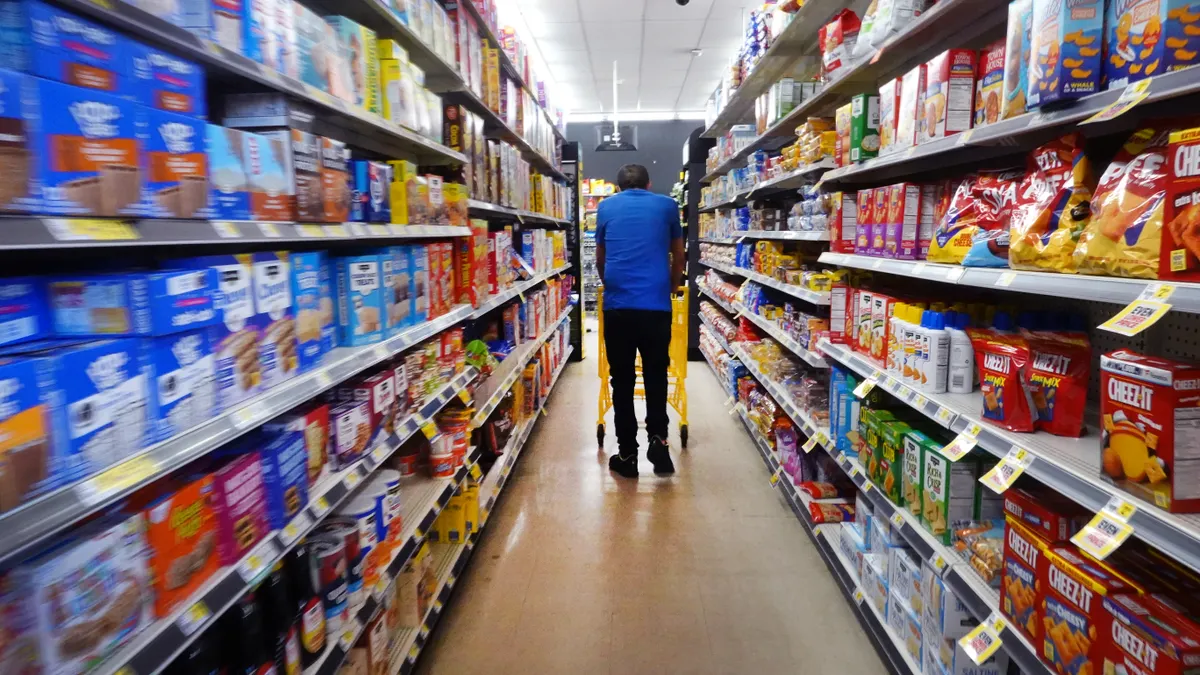You walk into a grocery store, pick up your favorite snack, and feel a subtle difference: the packaging looks familiar, the price tag remains unchanged—but the contents inside are noticeably less. This isn’t your imagination. It’s shrinkflation—the quiet economic phenomenon where companies reduce product sizes or quantities while keeping prices the same (or even increasing them).
Over the past few years, shrinkflation has become one of the most pervasive global pricing strategies. In 2024 alone, the OECD noted shrinkflation trends across 70% of consumer goods categories in Europe, while the U.S. Bureau of Labor Statistics recorded similar patterns in personal care, packaged foods, and beverages. Consumers feel cheated—not because prices rose (that’s inflation), but because value silently eroded.
Now, as 2025–2026 unfolds, governments and regulators are stepping in. Countries like France, Brazil, and South Korea have already introduced mandatory labeling laws for reduced product sizes, while the EU and U.S. are debating stricter disclosure requirements and penalties for deceptive packaging.
But will regulation solve the problem—or make it worse? Could transparency measures restore consumer trust, or will compliance costs push companies to raise prices even more? This blog takes a deep dive into global policy responses, the economic logic behind shrinkflation, its impact on supply chains and procurement, and what it means for consumers and businesses heading into 2026.
What Exactly Is Shrinkflation and Why Is It Surging?
Shrinkflation occurs when manufacturers reduce product size, weight, or volume without proportionally reducing price. A 500-gram pack of pasta quietly becomes 450 grams. A family-sized cereal box sheds 20 grams without any label highlighting the change.
The primary drivers include:
- Rising raw material and logistics costs forcing brands to protect margins.
- Consumer price sensitivity, making outright price hikes riskier for brand loyalty.
- Supply-chain disruptions, leading to higher packaging and transport expenses.
According to Eurostat, food prices in the euro area grew 5.8% in 2024, yet many brands chose shrinkflation over direct price increases, fearing consumer backlash. Similarly, the U.S. saw confectionery products shrink by an average of 7–10% since 2022, according to the USDA Consumer Trends Report.
Global Policy Response: A Patchwork of Regulations
France: Leading the Fight Against Hidden Shrinkflation
France introduced a landmark regulation in 2024 requiring supermarkets to display shelf labels indicating when a product’s size has decreased without a price reduction. Non-compliance carries fines up to €15,000 for companies and €3,000 for individuals. Early consumer surveys show 73% approval for transparency labels, though retailers complain of added labeling costs.
Brazil and Latin America: Bold Warnings on Packaging
Brazil’s 2024 consumer protection amendment mandates a front-of-pack warning icon when quantity reductions occur, aiming to curb deceptive practices. Chile and Argentina are considering similar measures for 2025.
South Korea and Japan: Tech-Driven Alerts
In Asia, South Korea leverages QR-code-based disclosure, allowing shoppers to scan and view a product’s historical size changes. Japan’s Fair Trade Commission has issued guidelines but stopped short of making them legally binding.
United States: FTC and State-Level Push
The U.S. Federal Trade Commission is under pressure from consumer advocacy groups to impose national rules requiring clear size-change disclosure. Meanwhile, states like California and New York are exploring bills that classify undisclosed shrinkflation as “unfair or deceptive acts” under consumer law.
European Union: Unified Labeling Standards in Debate
The European Commission is debating mandatory pan-EU rules on product downsizing disclosure, but member states differ on enforcement scope. Industry bodies argue these rules could raise compliance costs by €4–6 billion annually, which might paradoxically push retail prices even higher.
Does Regulation Work—or Backfire?
Regulation promises greater transparency, but its impact on pricing dynamics is nuanced. While consumers gain visibility, manufacturers face compliance costs for new packaging, labeling, and data systems. A study by BEUC (European Consumer Organization) estimates that implementing shrinkflation labeling could increase packaging expenses by 3–5% for FMCG companies, potentially leading to further retail price hikes.
Moreover, disclosure laws may normalize shrinkflation rather than deter it. If all brands indicate downsizing openly, consumers might view it as inevitable—blunting the deterrent effect.
Economic Context: Why Brands Still Prefer Shrinkflation
Inflation has eased globally—from 6.6% in 2023 to an estimated 4.8% in 2025—but input costs remain high. Packaging, transportation, and energy costs, though stabilizing, are still above pre-pandemic baselines. For FMCG companies, maintaining shelf price psychology is critical: €4.99 sounds better than €5.29, even if it means trimming 25 grams from the product.
Shrinkflation, then, becomes a psychological pricing strategy—a “less visible” form of cost transfer. Regulatory efforts challenge this tactic, but as long as consumer behavior favors price anchoring, brands will seek creative ways to protect margins.
Consumer Impact and Behavioral Shifts in 2025
Consumers are not passive in this equation. Awareness of shrinkflation has surged:
- A YouGov survey in Q1 2025 found 67% of European consumers actively check product weights, up from 42% in 2023.
- In the U.S., consumer complaints about hidden downsizing rose 35% year-over-year, according to the Consumer Federation of America.
Behavioral changes include:
- Brand switching to private labels or bulk-buy formats perceived as offering better value.
- Increased adoption of unit pricing apps, which calculate cost per gram or milliliter.
- Growing interest in subscription models and warehouse clubs, where pricing is more predictable.
Industry Pushback and Compliance Challenges
Industry associations argue that regulation risks:
- Operational complexity, especially for companies operating across multiple jurisdictions with inconsistent labeling rules.
- Environmental trade-offs, as frequent packaging redesigns increase material waste.
- Higher retail prices, passed on to consumers due to compliance costs.
A 2025 Kantar FMCG Executive Poll revealed that 61% of manufacturers fear EU shrinkflation regulations could erode margins by 2–3% annually, especially for smaller firms lacking economies of scale.
Supply Chain and Procurement Dimensions
Shrinkflation is not solely a marketing ploy—it’s deeply tied to supply-chain economics. Persistent bottlenecks in raw material sourcing, coupled with volatile commodity prices, pressure procurement teams to find cost-saving strategies without compromising quality.
Regulatory scrutiny adds another layer: procurement now needs greater traceability and real-time cost visibility to plan packaging and sourcing decisions in line with disclosure laws. Some companies are adopting AI-driven procurement platforms for predictive analytics, optimizing supplier contracts, and managing compliance seamlessly.
Technological Innovations in Transparency
Forward-thinking brands are leveraging tech to turn compliance into a competitive advantage. Examples include:
- Smart labels with QR codes linking to detailed product history.
- Blockchain-based supply tracking, providing immutable proof of product specs over time.
- AI-assisted pricing dashboards, enabling transparent cost breakdowns for regulators and consumers alike.
Will 2026 Bring Tougher Global Rules?
The trajectory suggests yes. With public pressure mounting and populist politics amplifying cost-of-living concerns, governments see transparency measures as a consumer win. The OECD Policy Forum (March 2025) projected that by mid-2026, at least 40% of G20 economies will enforce shrinkflation disclosure laws.
However, as enforcement ramps up, expect regional fragmentation before harmonization: North America leaning toward consumer litigation frameworks, EU opting for standardized labeling, and Asia experimenting with digital-first disclosure systems.
What Businesses Should Do Now
- Audit product portfolios for size consistency and prepare for labeling compliance.
- Engage procurement teams to secure sustainable materials that minimize packaging redesign costs.
- Leverage transparency as a differentiator, positioning openness as a trust-building tool rather than a regulatory burden.
A Strategic View: Mattias Knutsson’s Insight
According to Mattias Knutsson, a global leader in procurement and business development:
“Regulation around shrinkflation is inevitable, but businesses that treat compliance as an opportunity—integrating ethical sourcing and transparent labeling—will emerge stronger. Procurement must lead this change by aligning suppliers, packaging partners, and technology systems to support trust and resilience.”
His perspective highlights that the battle against shrinkflation is not only regulatory—it’s strategic, demanding a proactive stance from sourcing to marketing.
Conclusion
Shrinkflation is more than a quirky economic term—it’s a flashpoint in the evolving relationship between consumers, corporations, and regulators. While disclosure mandates promise clarity, they also introduce complexity, cost pressures, and the risk of normalizing a practice consumers already distrust.
The road ahead will test brands’ adaptability. Those clinging to opacity risk reputational damage in an era where price fairness and value perception drive loyalty. Conversely, companies embracing transparency—backed by smart procurement and tech innovation—can turn regulatory headwinds into a differentiator in trust-based markets.
As 2026 nears, one truth stands out: in a world of shrinking packages and rising scrutiny, honesty isn’t just the best policy—it’s the only sustainable strategy.




